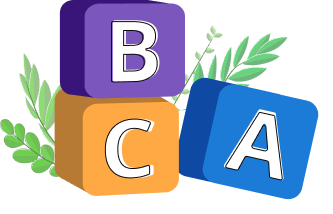
to no longer be asleep
Grammatical Information:

to wake up and get out of bed
Grammatical Information:

to travel or move from one location to another
Grammatical Information:
![to [have] a shower](https://cdn.langeek.co/photo/39071/original/shower?type=jpeg)
to clean the body by standing under a spray of water from a showerhead
to eat a morning meal, which is typically the first meal of the day

to give our attention to the sound a person or thing is making
Grammatical Information:
programs that are broadcast on the radio

to move or travel in order to do something specific
Grammatical Information:
to arrive at or reach a specified place or destination
Grammatical Information:

the place that we live in, usually with our family
Grammatical Information:

to prepare or cook something
Grammatical Information:

the main meal of the day that we usually eat in the evening
Dinner typically refers to the main meal of the day, traditionally eaten in the evening or late afternoon. The exact timing of dinner can vary depending on cultural norms and personal schedules. It often consists of a substantial spread of dishes, including a protein source, such as meat, fish, or tofu, starches, like rice, potatoes, or pasta, vegetables, and sometimes soup or salad. Dessert may follow the main course, featuring sweets like cakes, pies, or fruit. Dinner provides an opportunity for individuals and families to come together, share a meal, and unwind after a busy day.

to make a phone call or try to reach someone on the phone
Grammatical Information:

to telephone a place or person
Grammatical Information:

to look at a thing or person and pay attention to it for some time
Grammatical Information:
the programs that are broadcast on TV
![to [go] to bed](https://cdn.langeek.co/photo/21212/original/?type=jpeg)
to lie down in your bed to sleep, whether at night or for a nap during the day

on some occasions but not always
Grammatical Information:

to clean someone or something with water, often with a type of soap
Grammatical Information:

the things we wear to cover our body, such as pants, shirts, and jackets
Clothes are items made of textiles, animal skin, or other materials worn on the body for warmth, protection, or fashion purposes. Clothes come in various styles, colors, and sizes, and they are often designed to reflect cultural or social trends. They can include everyday items such as t-shirts, jeans, and sneakers, as well as formal wear such as suits, dresses, and high heels. Clothes can be accessorized with jewelry, belts, hats, and scarves, and they are often used to express individuality, cultural identity, or status. Clothes are an essential aspect of human culture and have been worn for thousands of years, evolving with time and technology.

to make something have no bacteria, marks, or dirt
Grammatical Information:

a building where people live, especially as a family
Grammatical Information:

a short journey we take on foot

to make letters, words, or numbers on a surface, usually on a piece of paper, with a pen or pencil
Grammatical Information:

a written or printed message that is sent to someone or an organization, company, etc.
A letter is a written or printed message that is typically sent from one person to another. It can be formal or informal and is often used for communication when a direct conversation is not possible. Letters are usually written on paper, but they can also be sent digitally through email or messaging platforms. They may convey personal thoughts, official information, requests, or invitations. Traditionally, letters were delivered by post or courier services, but with advancements in technology, electronic letters have become more common due to their speed and convenience.

a system that is used to send and receive messages or documents via a network
Email is a system used for sending and receiving messages over the Internet. It allows users to exchange text, files, and other types of information quickly and efficiently between computers, smartphones, and other devices. Email works by using electronic addresses, often referred to as email addresses, which identify the sender and recipient. When a message is sent, it is stored on a server and then delivered to the recipient’s inbox, where it can be read or replied to. Email is widely used for both personal and professional communication due to its speed, convenience, and cost-effectiveness.

under regular or usual circumstances
Grammatical Information:

in most situations or under normal circumstances
Grammatical Information:
used to show the type of transportation used to travel

a large vehicle that carries many passengers by road
A bus is a large vehicle designed to carry many passengers at once, usually following a fixed route. It is commonly used for public transportation in cities and towns, helping people travel to different locations efficiently. Buses have multiple rows of seats and space for standing passengers in some cases. They can be powered by gasoline, diesel, electricity, or other energy sources. Some buses operate on schedules, stopping at designated locations, while others are used for long-distance travel or private purposes, such as school or tour buses.
Grammatical Information:

a series of connected carriages that travel on a railroad, often pulled by a locomotive
A train is a type of vehicle that runs on tracks, used for transporting people or goods over long distances. It consists of a series of connected carriages or wagons, which are pulled or pushed by a locomotive, a powerful engine designed to move the train. Trains are powered by various energy sources, including electricity or diesel engines. They are an efficient way to travel, especially for long distances, and are commonly used in many countries for both local and international travel. Trains offer a smooth ride, and their fixed tracks help avoid traffic, making them a reliable form of transportation.
Grammatical Information:
Congratulations! !
You learned 31 words from undefined. To improve learning and review vocabulary, start practicing.
Review
Flashcards
Spelling
Quiz
